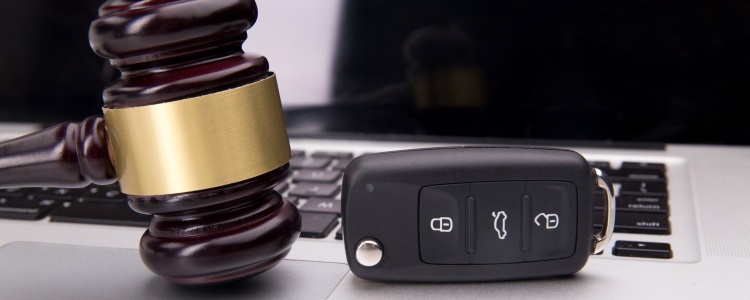It's a common misconception that you won't be able to get a car loan if you're in an open Chapter 7 bankruptcy. While it's not common, it's certainly possible if you work with the right kind of lender for your situation, and have your trustee's permission to get a loan, of course!

Which Auto Lenders Work With Open Chapter 7 Bankruptcy?
Auto Lenders For Bankruptcy Borrowers
When you're in an open Chapter 7 bankruptcy and you find yourself needing a vehicle, you're not out of luck. There are some bankruptcy auto lenders that are willing to help. Subprime lenders work with people in unique credit situations.
Not all subprime lenders work with bankruptcy borrowers, and you may find that easier to get an auto loan after a bankruptcy instead of during it. This is often the case when you try for one in Chapter 7 because the process is rather short – typically only four to six months. Once your bankruptcy is discharged, you shouldn't have too much of an issue finding a lender to work with.
When Can I Get a Car in Chapter 7?
If you can't wait to get another vehicle, you first need to have completed your 341 hearing, or Meeting of Creditors. This is a standard part of both Chapter 7 and Chapter 13 bankruptcy proceedings, in which you meet with your court-appointed bankruptcy trustee.
 Your trustee typically verifies your identity, asks questions regarding your bankruptcy filing, and gives your creditors a chance to come and ask you about financial matters (though they rarely show up). Once the 341 hearing is closed, most people who file Chapter 7 typically receive a bankruptcy discharge in about 60 days.
Your trustee typically verifies your identity, asks questions regarding your bankruptcy filing, and gives your creditors a chance to come and ask you about financial matters (though they rarely show up). Once the 341 hearing is closed, most people who file Chapter 7 typically receive a bankruptcy discharge in about 60 days.
If at any point after you attend your meeting of creditors you need to buy a vehicle, your trustee has to approve the cost. They generally don't have a problem doing this, because they understand the necessity of having a vehicle. Typically, the only stipulation is that you have to buy a modestly priced, or affordable, car – luxury, fully loaded vehicles aren't likely to get the go-ahead.
Getting an Auto Loan During Ch. 7 Bankruptcy
It can be a challenge to find a bankruptcy auto loan during an open Chapter 7 because these loans can pose a big risk for a lender. They don't often want to risk a new car loan ending up included in a bankruptcy, since they stand to take a loss.
That being said, the lenders that do work with open bankruptcy tend to look at the situation as a bad credit situation, and they know how to handle those! Bankruptcy leads to a lower credit score, but poor credit doesn't stand in the way when you're working with subprime lenders. They know that there's more to bankruptcy borrowers than bad credit.
Using factors such as financial and residential stability, work history, and your willingness to have some skin in the game, they get a deeper understanding of your overall scenario. Believe it or not, bankruptcy lenders want to see you successfully complete a car loan, which can help put you on the right track for credit repair!
Finding A Bankruptcy Auto Loan
Now that you know you have to work with a subprime lender to get into an auto loan with an open Chapter 7 bankruptcy, let us help you take the next step. Rather than searching all over for a bankruptcy auto lender on your own, start here at Auto Credit Express instead.
We've been connecting bankruptcy borrowers to dealerships that have bad credit lending partners for over 20 years. The process is fast, free, and never comes with any obligation. To get started on your way toward a vehicle during Chapter 7 bankruptcy simply fill out our auto loan request form and we'll connect you with a local dealer, hassle-free.

Senior Automotive Financing Editor
Meghan has been writing professionally for over 25 years. She is expertly versed in automotive special financing and pricing analysis, having published hundreds of articles on Auto Credit Express and its sister sites, CarsDirect, and The Car Connection. Read more
Suggested Posts For You
Receive Free Updates
Get the latest credit tips, resources and advice delivered straight to your inbox.













